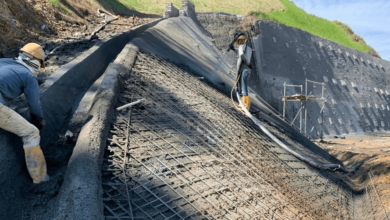concrete pumps: Choosing the Right Type for Every Construction Project

Concrete is the backbone of modern construction, and pouring it efficiently can significantly affect project timelines, cost, and quality. In the past, concrete placement was labor-intensive and time-consuming. But thanks to technology, today’s construction relies heavily on concrete pumps, which streamline concrete delivery with precision and speed.
However, not all concrete pumps are the same. From small residential sites to massive commercial projects, choosing the right type of pump is crucial. The wrong equipment can delay work, waste material, and drive up costs, while the right one can enhance productivity and quality.
This article explores the various types of concrete pumps their applications, and how to select the right one based on your construction needs.
Two main types of concrete pumps
To make an informed choice, it’s essential to understand the two main categories of concrete pumps:
1. Boom Pumps
These are truck-mounted pumps with a long, extendable arm (boom) that allows concrete to be placed precisely over large distances or at great heights. They are ideal for:
- High-rise buildings
- Bridges and flyovers
- Foundations in tight spaces
- Projects requiring vertical concrete placement
Boom pumps are operated via remote control and offer excellent flexibility, making them the go-to choice for many large-scale construction projects.
2. Line Pumps
Also known as trailer-mounted pumps, line pumps use hoses or steel pipes to transport concrete horizontally over long distances. These pumps are typically used for:
- Residential foundations
- Slabs and driveways
- Swimming pools
- Narrow alley construction
Line pumps are more affordable and compact than boom pumps, and they work well in projects with limited access or low volume concrete pours.
See also: Embracing Balance and Strength Through yoga class hk: A Modern Wellness Movement
Factors to consider when choosing concrete pumps
Selecting the right concrete pump requires evaluating various project-specific criteria:
1. Project size and scale
Large-scale infrastructure projects, like stadiums or commercial towers, often need boom pumps because they can cover more area and reach higher elevations. On the other hand, a residential project may only require a line pump due to its simplicity and cost-efficiency.
2. Concrete volume
Projects demanding high volumes of concrete in a short time benefit from high-capacity boom pumps.
3. Site accessibility
If the construction site is in a congested area or has narrow entry points, boom trucks might not be feasible. In such cases, a trailer-mounted line pump offers more flexibility and can be set up in tight spaces with extended hose lengths.
Specialized concrete pumps for unique applications
In addition to standard boom and line pumps, there are several specialized concrete pumps designed for specific needs:
– Truck-Mounted Static Pumps
They’re great for infrastructure projects where the pump needs to be frequently repositioned.
– Stationary Pumps with Placing Booms
Used in high-rise construction, these pumps remain fixed while the placing boom distributes concrete floor by floor. They are efficient for continuous multi-level pours.
– Shotcrete Pumps
These are specially designed for spraying concrete at high velocity and are used in applications like tunnel linings, slope stabilization, and swimming pools.
Benefits of selecting the right pump
Choosing the appropriate concrete pump isn’t just a technical decision—it impacts every phase of the construction process:
1. Increased efficiency
With the right pump, concrete can be delivered continuously without delays, reducing the total construction time.
Case studies: Matching pump types to project needs
Urban residential build – Line pump success
A contractor building a row of single-family homes in a tight urban neighborhood chose a line pump due to space constraints and limited access. The pump easily delivered concrete through narrow alleyways, allowing each pour to finish on schedule.
Bridge construction – Boom pump efficiency
In a highway overpass project, a boom pump enabled the crew to pour concrete over long spans without blocking traffic. The machine’s 42-meter reach ensured fast, accurate placement with minimal crew and reduced traffic disruption.
High-rise tower – Stationary pump with placing boom
For a 30-floor apartment complex, a stationary pump with a climbing boom system was installed. It allowed concrete to be delivered floor-by-floor as construction progressed upward, saving time and reducing reliance on cranes.
Maintenance tips to extend pump life
Choosing the right pump is just the beginning. Proper use and maintenance are crucial for maximizing its lifespan:
- Clean hoses and pipelines after every use to prevent clogging.
- Regularly inspect seals, valves, and hydraulic systems.
- Lubricate moving parts as recommended by the manufacturer.
- Train operators in safe handling and troubleshooting procedures.
A well-maintained concrete pump not only delivers better results but also prevents costly breakdowns and repairs.
Conclusion
In the fast-paced world of construction, time is money—and precision is everything. concrete pumps have become indispensable tools for contractors aiming to deliver quality work efficiently and safely. But to get the most from this technology, it’s critical to choose the right type of pump based on your specific project needs.
Whether it’s a small driveway or a soaring skyscraper, selecting the right concrete pump ensures your construction runs smoother, faster, and more profitably. With so many types and models available today, there’s a pump for every purpose—and making the right choice can elevate your project from good to great.





